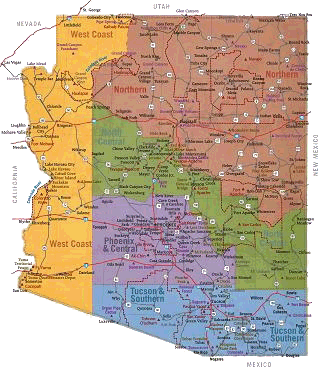Wildlife Viewing in April
Phoenix and Central Arizona
A Beautiful Hike
What a great month to explore Mount Ord, northeast of Phoenix and less than one hour’s drive from Sky Harbor Airport via the Beeline Highway. The peak tops out at 7128 feet and serves as the dividing line between Gila and Maricopa Counties, high enough for ponderosa and pinyon pines to shelter nuthatches and hairy woodpeckers. For a scenic drive and great day of birding, continue up the Beeline Highway (route 87) to state route 188 and then turn southeast for a leisurely drive along Tonto Creek and past Roosevelt Lake. Wildlife areas are near the A Cross road and the Three Bar; great roadside views of the lake are frequent along 188 and you’ll see spring populations of grebes, cormorants, ducks and coots.
Mount Ord
Tonto National Forest camping areas are plentiful here and dark-sky nights allow great stargazing. Rise with the sun and use binoculars to glass the dry washes feeding Roosevelt Lake to see javelina herds and foraging coyotes.
You’ll find aquatic birds nearer the Phoenix valley at the confluence of the Salt and Verde rivers (also known as the Phon D. Sutton Recreation Area). Less than a half-hour drive north of Mesa, the 100-acre parcel supports trees large enough for eagle and osprey nests. Visit in April to reacquaint yourself with the territorial “Whir!” call of a male Gambel’s quail, and to hear the impressive mimicry of curve-billed thrashers.
Northern Arizona
In Flagstaff and Northern Arizona bighorn sheep and mule deer become more visible against a backdrop of green spring vegetation at the South Rim of the Grand Canyon, where eastern collared lizards, common side-blotched, and tiger whiptails are easily photographed basking on warm rocks.
Tiger Whiptail Lizard
The western whiptail is a species of lizard in the family Teiidae. The species ranges throughout most of the southwestern United States and northern Mexico. Most of its populations appear stable, and it is not listed as endangered in any of the states comprising its range.
Common Side-blotched Lizards
The common side-blotched lizard is a species of side-blotched lizard native to dry regions of western United States and northern Mexico. It is notable for having a unique form of polymorphism wherein each of the three different male morphs utilizes a different strategy in acquiring mates.
Eastern Collared Lizard
The common collared lizard, also called eastern collared lizard, Oklahoma collared lizard or collared lizard, is a North American lizard that can reach 8–15 in in length, with a large head and powerful jaws.
Tucson and Southern Arizona
Scores of colorful migrant warblers, vireos, tanagers, grosbeaks, orioles, flycatchers, buntings, thrushes and hummingbirds invade to set up breeding territories. Birdsong abounds in every habitat and red-faced, Grace's and Virginia's warblers move into low mountain canyons. Owls become very vocal with migrant elf and flammulated alongside resident whiskered and westernscreech. Shorebird numbers begin to build at Willcox and Avra Valley. Regular hummingbird breeders are common in the lowlands and mountain canyons. Migrant bats return from Mexico, and hibernating locals emerge for the season during spring months. Bridges and culverts provide habitat for maternal colonies of Mexican free tailed bats, which can number in the thousands and are enthralling to watch as they stream out each evening to hunt for insects.











